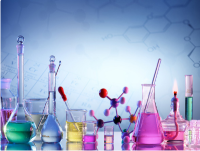Alu- and LI-Primed PCR-Generated Probes for Nonisotopie in Situ Hybridization
互联网
578
Hybrid cells are proving to be an important resource in the genetic analysis of chromosome regions. These hybrids may take the form of fusions between somatic cells from different genera, followed by selection for specific chromosome markers (somatic cell hybrids—see Chapter 17 ), the introduction of individual chromosomes into host cells of a different genus, and selection for the expression of specific genes (chromosome-mediated gene transfer, CMGT—see Chapter 20 ), or the introduction of a fragment of a mouse or human chromosome into a vector that can replicate as a chromosome in yeast cells (yeast artificial chromosomes, YACs—see Chapter 21 ). The donated material carried by the host cell can range from a small fragment of a chromosome (100 kbp to 1 or 2 Mbp) in a YAC to one or more complete chromosomes in the somatic cell hybrids. The donated material is known as a transgenome. In each of these cases, in order for the hybrid cell line to be of value as a resource for studying aspects of the human genome, it is essential that the precise chromosome composition of the transgenome is ascertained. The use of Southern hybridization to identify specific DNA segments carried by the transgenome is relatively straightforward (see Chapter 20 ). However, this method can only answer specific questions; in order to find out precisely which regions of the donor transgenome are present in the host cell, a different approach is needed.









